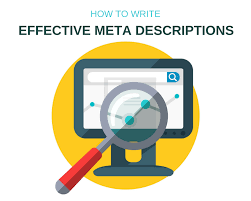How to Do on Page Optimization
 On page optimization is essentially a simple process. To summarize, make sure you’re selecting a keyword that people are actually searching, use your free Google keyword tool to do it, once bolded and once italics and once with the keyword in a link. Put a keyword in a link on the page. Sometimes I’ll link to the page itself. If I am optimising a page for wine supplies, one of these wine supplies I may make it a link and link it through to its own page. I don’t know if that has a huge effect, but I do know that Google looks for links.
On page optimization is essentially a simple process. To summarize, make sure you’re selecting a keyword that people are actually searching, use your free Google keyword tool to do it, once bolded and once italics and once with the keyword in a link. Put a keyword in a link on the page. Sometimes I’ll link to the page itself. If I am optimising a page for wine supplies, one of these wine supplies I may make it a link and link it through to its own page. I don’t know if that has a huge effect, but I do know that Google looks for links.
If we have a link with the keyword on it, we’re effectively calling Google and saying look over here, and Google is saying, it has the keyword, so this part must be about the keyword. But that’s like bolding and italics, it’s not make or break, but it is good practice. Pick one keyword, make sure your secondary keywords are on topic and related and a variation. Make sure your title tag is short and punchy. If you’re having trouble coming up with titles, go to Amazon. Use between three and five words. Your meta description should be between two and three sentences. Again a good place is Amazon, because Amazon will have a little description of the book. Be careful when you’re copying it out because you don’t want to infringe copyright, so change it slightly. The h1 tag should be slightly longer, between four and seven words is fine. The contents of the page should be between three and six hundred words.
Make sure you use the keyword early and often, usually once or twice in the first paragraph, sprinkle it throughout. These numbers apply to a page of about six hundred words. If it was less you would use the keyword three to four times and if it was more, say nine hundred word, you might use the keyword five or six times. Don’t spend hours trying to get your on page optimisation right. It can be easy to get caught up in the detail. Sometimes you can get better return for your time by quickly optimising a page and then going on to a second page.
It’s better to have two pretty good optimised pages than one extremely well done. The reason for that is we don’t know what a perfectly optimised page is. Because nine times out of ten it’s better to throw out more pages, as long as you’re following good practice.
One thing to consider is that twenty percent of your ranking factors are going to be on page optimisation.

